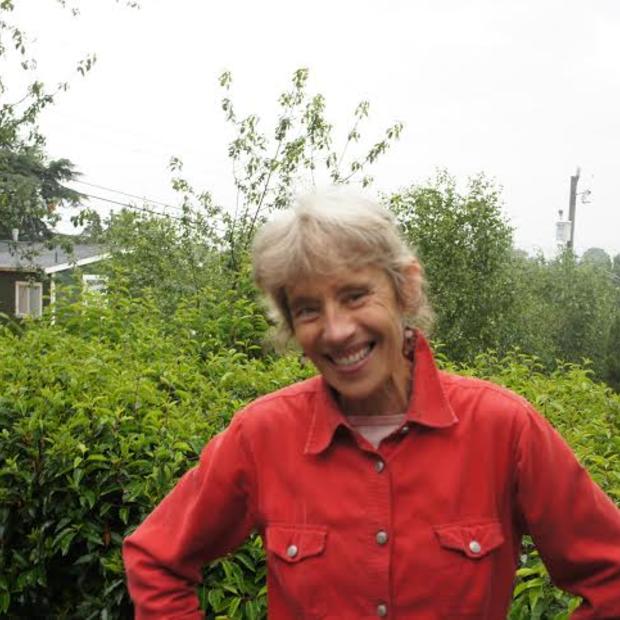The Minnow, a NOAA research vessel, takes off across Elliott Bay. In less than five minutes it reaches its destination — the base of the cliffs that line Seattle's Magnolia neighborhood — and puts down anchor. Marine ecologists, who double as navigators and divers, prepare to enter the water. They’re looking for evidence of what may be a new development in Elliott Bay — spawning herring, the troubled but keystone forage fish.
“Do the zig-zag pattern. If you don’t hit it this time, come back out and go a little bit west,” Greg Williams, a NOAA fisheries biologist, tells a diver. The crew is looking for herring eggs near the shoreline of Magnolia Bluff. It’s the second year herring have been seen spawning in Elliott Bay and the first year of the study.
Many populations of Pacific herring have been in steep decline for the last thirty years, including what was once the largest population at Cherry Point near Bellingham. If the Elliott Bay population could establish itself permanently, it would be some of the best news in decades for marine ecologists.
Click on the audio player above or here to listen.
Multiple factors are at play in the decline: predation, disease and habitat loss — in particular the loss of eelgrass, which acts as a refuge and feeding ground for many marine species and is used by herring to lay their eggs. But there’s no convincing evidence that links the loss of eelgrass with the herring's decline, says Tessa Francis with the Puget Sound Institute. She’s one of the lead marine ecologists behind the study.
A collaboration between the EPA-backed Puget Sound Institute and NOAA, the study is sampling herring spawning habitat all over Puget Sound to determine whether herring are limited by their available spawning habitat. Herring eggs have been found on underwater vegetation of all types — eelgrass, red algae, flat brown kelp and an invasive species called sargassum.
“We don’t know how long it’s been in Puget Sound, but it appears that everywhere we go herring are laying eggs on this invasive species of algae and almost preferentially. We’ll visit a site where everything is covered in eggs except the eelgrass,” Francis explains. What's uncertain is whether the invasive species provides a herring spawning habitat that is equal to or able to compensate for the loss of habitat provided by native eelgrass.
Scientists still aren't sure if herring preferences indicate the best habitat for the eggs. Herring might prefer to spawn on sargassum, explains fisheries biologist Williams, "But the hatching rates might not be as good, or there might be some secondary relationship that ends up showing it’s not the most beneficial substrate for the eggs to be spawned on.”
The research team hopes to determine whether or not eggs laid on other types of seaweed see different success rates. Their plan: measure the density and survival of the Elliott Bay eggs in the lab and compare them with those collected the last time the team sampled here and at sites from Quilcene Bay to Port Orchard.
Back onboard, diver Ole Shelton, a fisheries biologist with NOAA, describes what he saw on the sandy bottom. Dungeness crabs and little crabs clung to the sides of kelp. Schools of tiny surf perch swam in the opposite direction. Mostly though, he collected herring embryos.
“If you look really close, you can see their eyeballs. They’re developing little fish eyes,” says Francis. She and the team put the eggs and vegetation in ziplock bags to take back to the lab. “These are probably 12 to 13 days old. They’re very close to hatching, so, if we had a microscope, we would be able to see a very well formed embryo in there that looks a lot like a fish.”
There's some excitement in the herring community to see whether these new herring are a new stock of spring spawning herring; that is, genetically distinct from other threatened herring populations. Dr. Lorenz Hauser, a fisheries geneticist at the University of Washington, will analyze the eggs the team collected to see whether they’re offshoots of Cherry Point herring, recolonized by another nearby population or genetically unique.
There's another wrench in the equation too: the survival rate across a single group, or stock, of herring. A single female can lay up to a hundred thousand eggs, the reproductive success of which depends on the amount of available food and whether or not predators devour the larvae. “If a lot of the larvae survive, then a lot of the next generation can actually be descendants of a single female and what that means is the genetic variability would be much lower than we would expect from the number of herring in the sea,” Hauser says.
There’s no evidence yet that low genetic diversity is a problem, but it doesn’t mean it isn’t; only that it’s not yet been studied. What’s more important, Hauser says, is the variability between stocks, especially the timing of when they spawn.
Regardless of exactly who the herring in Elliott Bay are, Puget Sound waters not previously on the radar are now under scrutiny. The 18 currently-recognized herring stocks may just need to make room for new members of the extended family.



